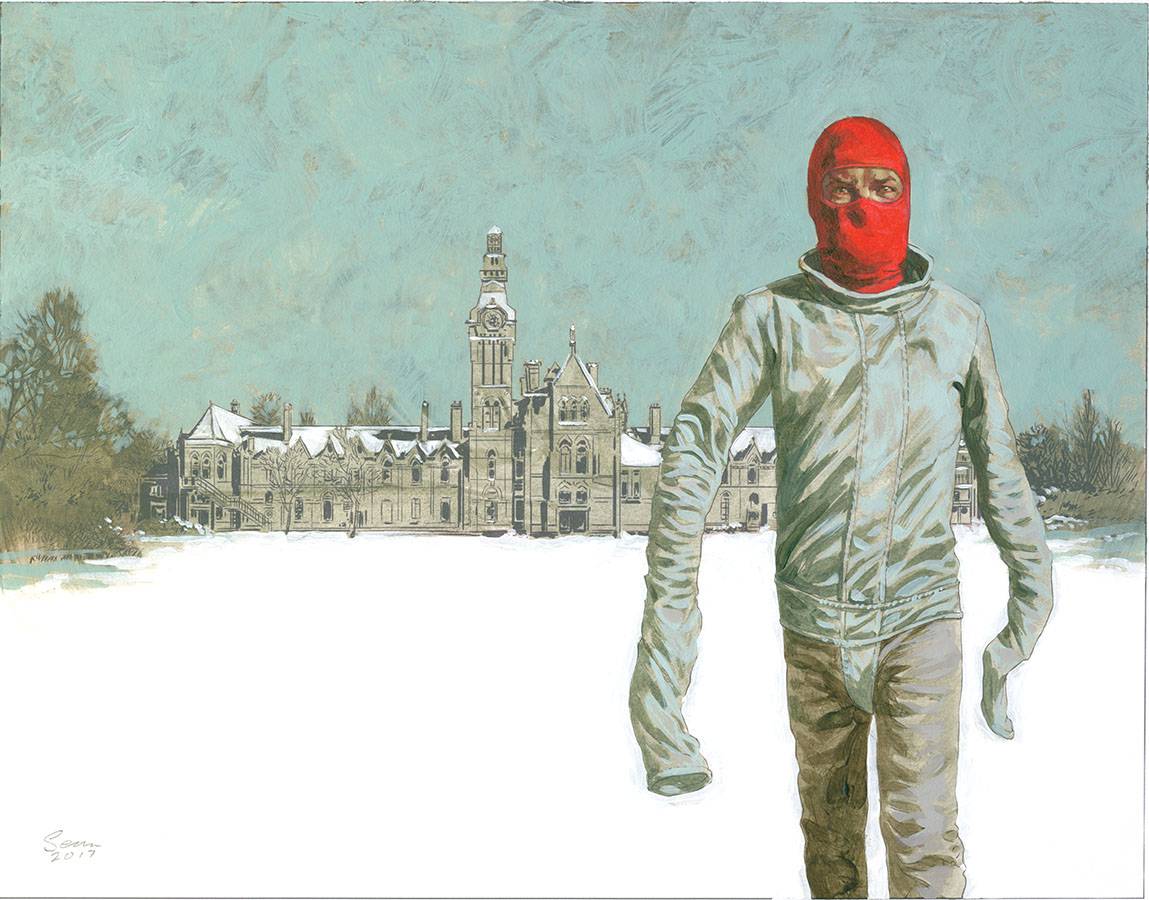Table of Contents Show
The idea of vigilantism has fascinated people for centuries. From Robin Hood to Batman, as a culture, we just can’t seem to get enough of a lone hero embodying justice who fights for the people. In Kill or Be Killed, however, readers follow Dylan, not a hero, but a person who is thrust unwillingly into vigilantism and decides that if he must, he will kill those who are “deserving.” Dylan’s story explores the ethical consequences of such behavior in a 20-issue comic book series from Image Comics, written by Ed Brubaker, with art by Sean Phillips, and colored to perfection by Elizabeth Breitweiser.
The story is a stark contrast to the merry tales of Robin Hood and the extraordinary world of Batman (though the Dark Knight has plenty of gritty tales). Classic vigilantes typically have to overcome the odds and convince the people of their righteousness, but they tend to reap the rewards, or at least, achieve their goal with somewhat minimal harm. This reinforces utilitarian ethics where one weighs conflicting values based on the possible ramifications (( Foreman, Gene. The Ethical Journalist. 2016 )). In other words, the ends justify the means.
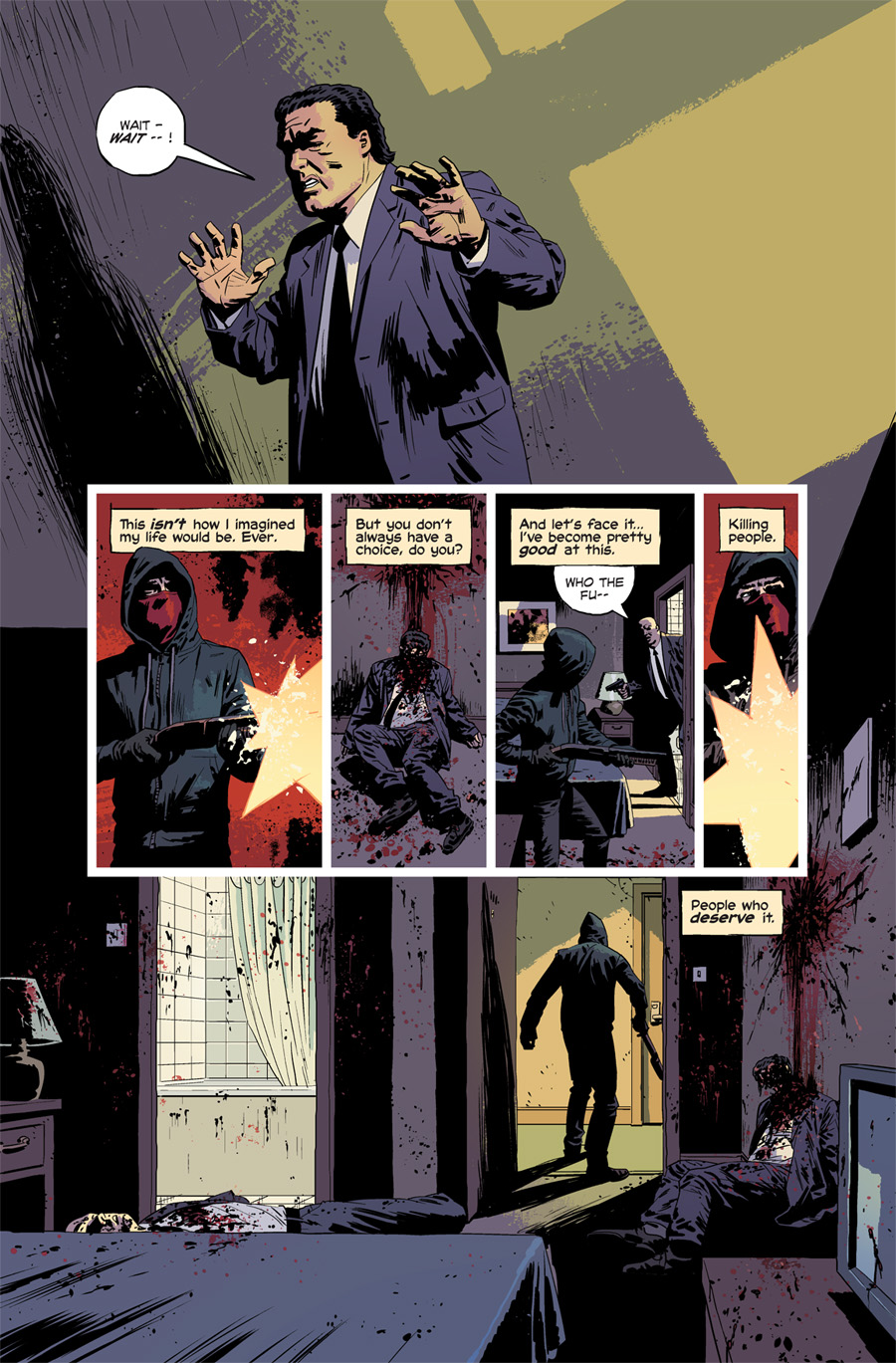
In Kill or Be Killed, this utilitarianism is questioned by exploring a more visceral and realistic view of the mental and emotional harm that might come with such violent vigilantism; moreover, a conflicting deontological ethical view is seen through the perspective of law enforcement. In such a theoretical approach, there is no weighing of values or thinking of possible outcomes. Either you’re ethical for following the defined “rules,” or you are unethical. It is absolute.
The Story Of Kill Or Be Killed
To understand the ethical theories that are explored in Kill or Be Killed, it is important to understand the general narrative. If you are not familiar with the series, it tells the story of Dylan, a deeply depressed college student. After a failed suicide attempt, he sees a vision of a demon who claims to have saved his life, but in return, Dylan must “feed the beast.” According to the demon, he must kill one person per month to stay alive. He is skeptical, but as the first month draws to a close and he still hasn’t killed anyone, Dylan becomes inexplicably ill.
The demon appears once more but convinces Dylan this time. Desperate, he decides he will kill. Dylan remembers a man he knows for a fact molested his friend, Teddy, when they were young boys. He will be the one, Dylan decides. On a snowy New York City night, Dylan finds him and utters two words, the last thing this man ever hears, “Remember Teddy?” (( Dylan — Image Comics — Kill or Be Killed (2016) ))
He instantly feels better, physically, and truly starts to believe that he must kill for the demon. Being the decent person he is, Dylan decides he will try to kill only “bad” people once per month. Needless to say, things start to spiral out of control for the budding vigilante. Inspired by his actions and their effect, at first, Dylan soon crashes back down to reality, confronted by the dangerous physical and mental toll these brutal slayings are having on him and those around him.
A Word On Art And Ethics
One of the most engaging ways that Kill or Be Killed uses realism is in its artistic style. Phillips’ highly stylized art captures a realistic tone. The characters are not glamorous, far from it, and the world they live in has a gritty texture filled with palpable violence. Nevertheless, as great as Phillips’ work is at creating a realistic feel, it’s Breitwesier’s masterful use of flat coloring that makes the comic stand out.
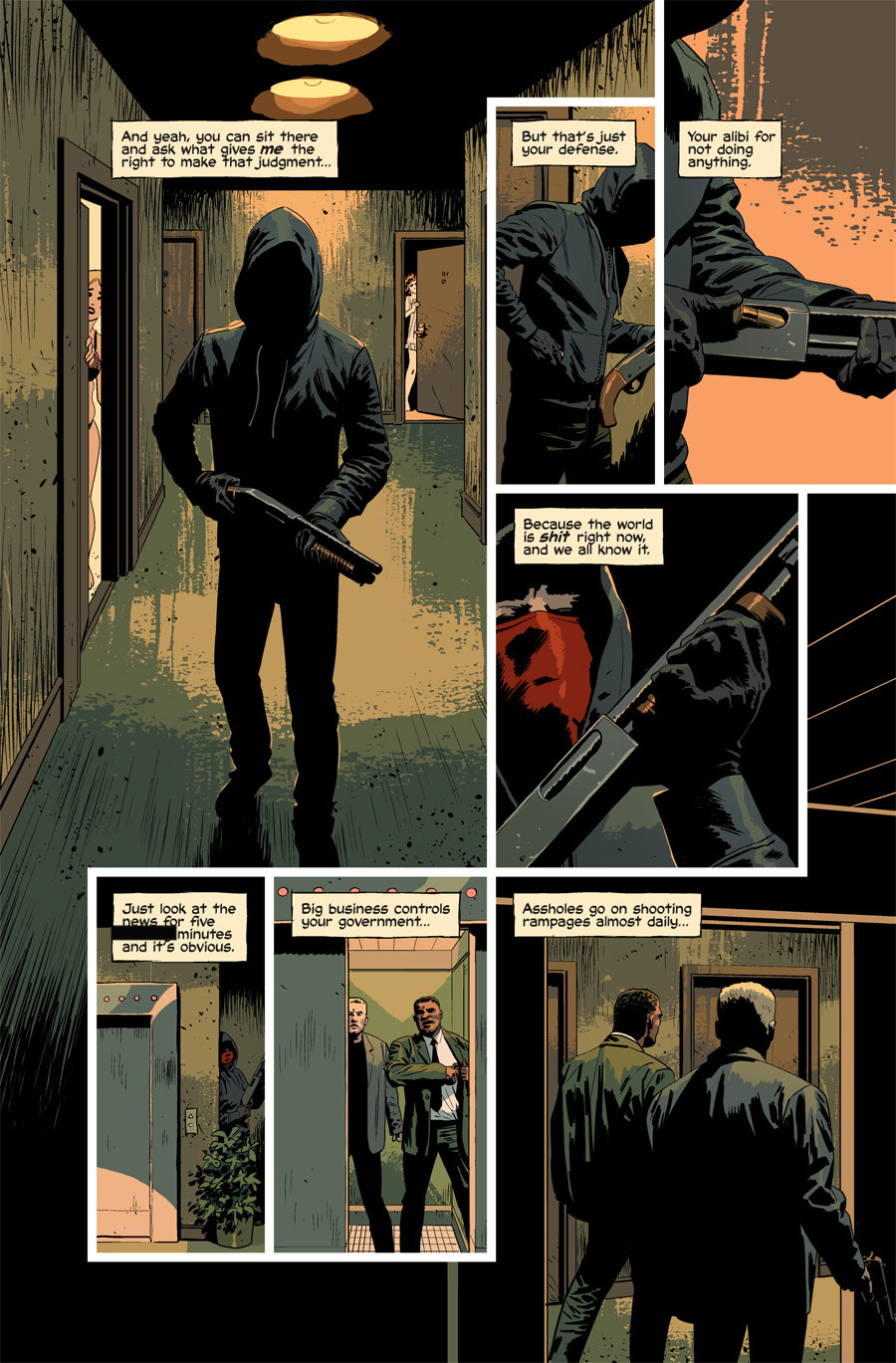
Throughout the book, Dylan’s moments and moods are brilliantly, yet subtly, portrayed through telling color palettes. Such coloring can hint at Dylan’s current ethical climate. During his more peaceful moments, his world is shown in calming light blues and earth tones, even feeling hopeful at times. As the vigilante, the colors shift to heavier black shadows and darker grays, blues, and reds, indicating the questionable moral territory Dylan has shotgun-blasted his way into.
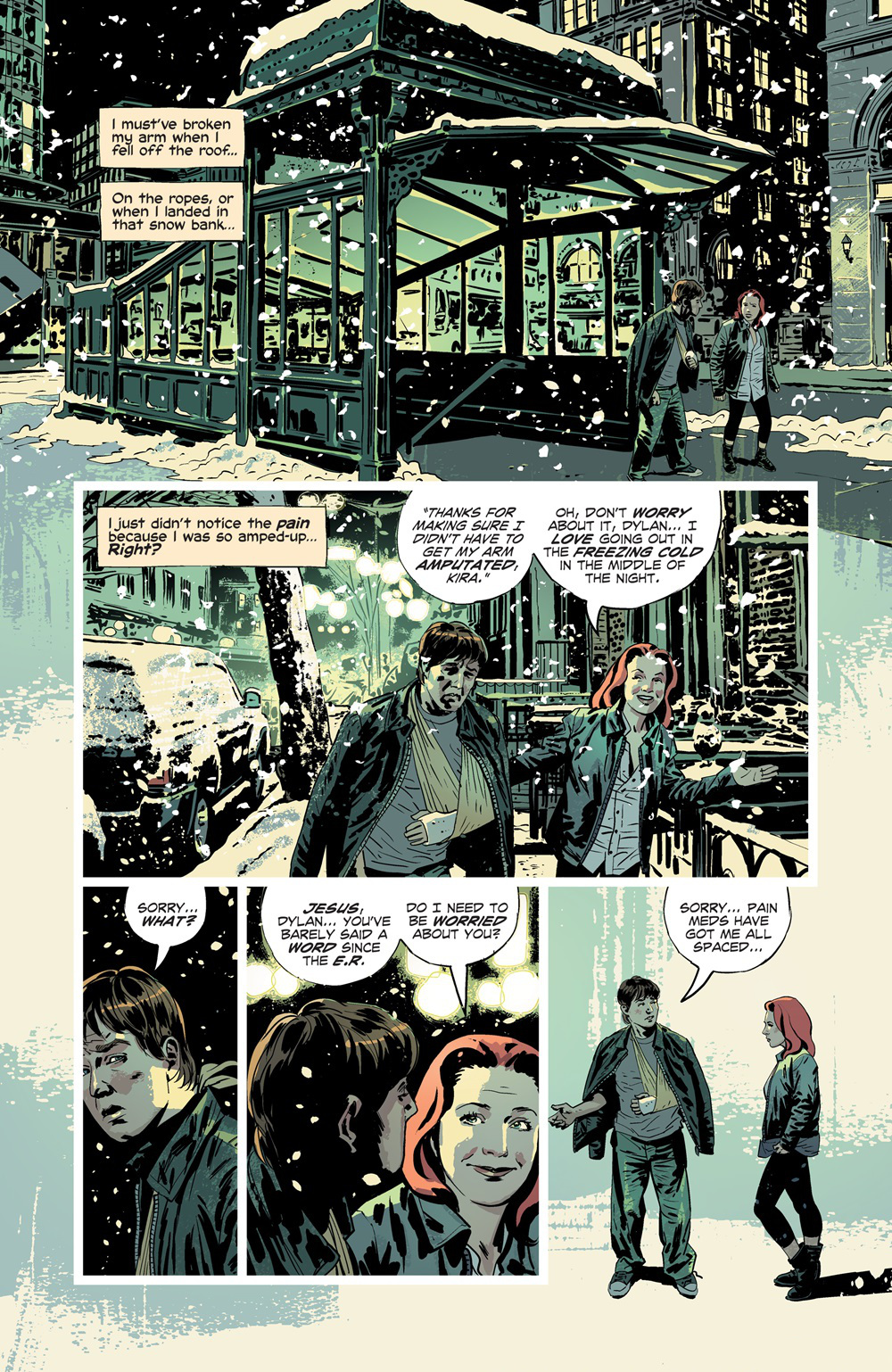
Clash Of The Ethical Titans
Dylan’s mindset that he is not a “bad” person for killing those who “deserve” it is supported by utilitarian ethics and its flexibility (( “Act and Rule Utilitarianism.” https://iep.utm.edu/util-a-r/, 2014 )). Dylan sees his unethical behavior as being outweighed by the ethical “good” he is doing. But he is not Batman, he is killing. Murdering.
The police, of course, are focused on rules, on laws. No person is above the law, it’s as simple as that. This deontological theory of ethics condemns Dylan as unethical, no matter the outcome of his actions (( “Ethics Explainer: Deontology.” https://ethics.org.au/ethics-explainer-deontology/, 2016 )). Based on this rules-based theory, Dylan’s duty is to obey the law, as an example to everyone else, and, in turn, if every person does that then society will prosper (( Foreman, Gene. The Ethical Journalist. 2016 )). Like all things, both of these philosophies have strengths and weaknesses in their theories. Kill or Be Killed highlights these moral attributes in a way that allows the reader to explore the ethical implications associated with vigilantism and violence in a more realistic sense.
Utilitarian Ethics
Dylan thinks that because the legal system has failed, or it’s corrupted by the very evil it has sworn to eliminate, he is ethically justified in the brutal way he enacts “justice.” Is it ever right to kill a person, though? Kill or Be Killed makes the reader question that right alongside Dylan. His inner monologue gives insight to his cynical views, but some of it is just logical enough to take root in the reader’s mind. Thoughts like “In real life, the bad sleep well…And guilt doesn’t trouble them (( Dylan — Image Comics — Kill or Be Killed (2016) )) .” True, Dylan, but should you really be committing homicide? Brubaker delivers an answer in the form of Dylan’s first victim, a sexual predator.
This is comparable to choosing a Nazi as the villain in a story. No matter how depraved or violent the act was done to this villain, the audience is accepting, even glad, for the brutality because it was an irredeemable Nazi. Kill or Be Killed uses a similar idea to firmly plant the reader on the side of Dylan’s ends-based ethical approach. If there was ever a stigma of a crime that can’t be washed away, it lies with rape and sexual assault, especially as it relates to children. We, as readers, are killers by association but we’re okay with it, he “deserved” it. As Dylan puts it, “And ****, even if this guy is Mother Teresa now…He spent years raping his own brother…That’s got to be enough, right (( Dylan — Image Comics — Kill or Be Killed (2016) )) ?”
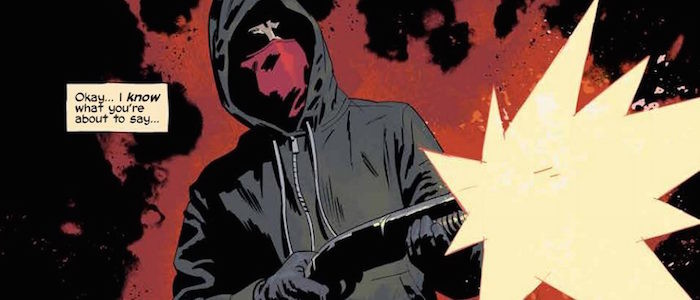
Initially, from a utilitarian ethical standpoint, no, it is not enough. The positive impact of killing this man does not seem to outweigh the negative effects. Dylan is breaking the law, harming anyone who might care for this man, and crossing the ultimate ethical line: murder. A lot of unintended harm could come from this one “good” act of justice, but Brubaker and Phillips double-down on the positive impact of Dylan’s first kill.
During the investigation into Dylan’s first homicide, an entire ring of child molesters is uncovered. It is made explicitly clear that the only reason these sexual predators were found out is due to Dylan’s murderous act. After wrestling night after night with the morality of killing another human being, Dylan is vindicated. The ends justified the means.
Deontological Ethics
Where a utilitarian ethical approach requires the consideration of multiple ethical values and factors to come to the most beneficial decision, deontological ethics strip away such ambiguities. Following the rules (laws, for example) is the only way to remain ethical, breaking the rules will always be unethical, no matter what. In a way, our society is built on a version of this ethical theory, otherwise, we wouldn’t have laws in the first place. Kill or Be Killed gives the reader a reason why this theoretical approach could, at times, be flawed.
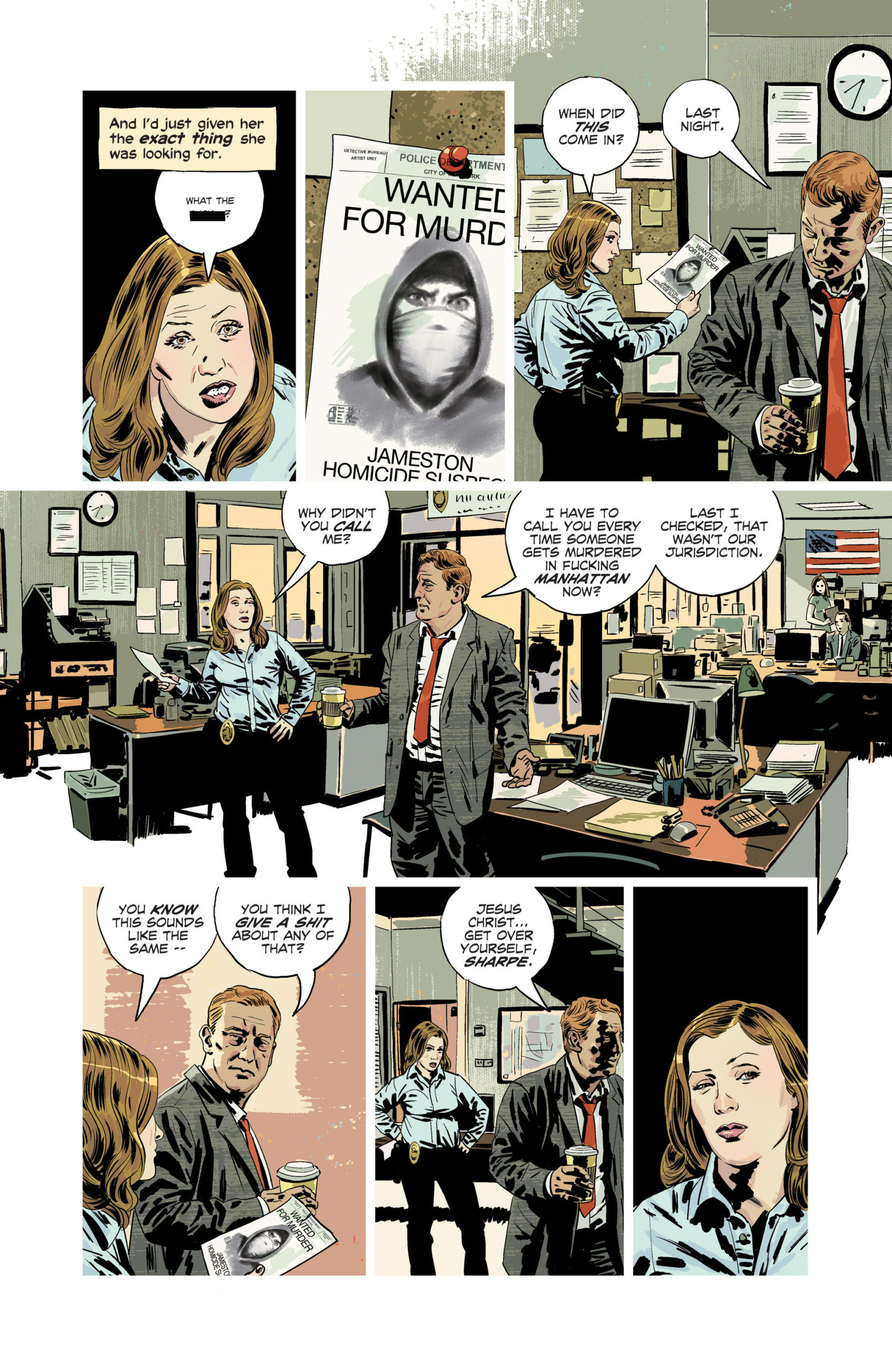
The perspective of the law is blurred by petty power struggles over legal jurisdiction or male officers threatened by Lily Sharpe, a determined female detective. Rules-based ethics have no way of weighing the ethical subtleties of bureaucracy. They are absolute as long as the rules are being followed (and jurisdiction is a rule). That is the glaring weakness of deontological ethics, its rigidity. The deontological perspective of the police works to highlight the repercussions of Dylan’s utilitarian ethical philosophy while also acting as an anchor point in reality.
Compared to over-the-top superhero worlds where vigilantes are running wild across most major cities, Kill or Be Killed proves to be more true to what might actually happen. After only a few kills and a generic description of a “masked vigilante,” Dylan becomes the hottest news story in New York City. Police patrols are increased. Divisive morality debates saturate the airwaves. Even after Dylan has set a Russian sex worker “free” by killing her handler, she violently attacks him instead of thanking him. These important aspects of the story work to push the narrative, ramp up the anxiety, and, ultimately, act as Dylan’s consequences for crossing an ethical line.
The Cultural Implications Of Kill Or Be Killed’s Ethical Perspectives
It is clear that Kill or Be Killed means to comment on how our justice system might have issues, but not solely due to the system. Individuals are corrupt. Prominent criminals seem untouchable. Personal grudges and agendas fuel far too much of what goes on in the bureaucratic wasteland of the public sector. But what is Kill or Be Killed telling us about the morality of murder, violence, and vigilantism? That is more ambiguous. There are times during the story when Dylan seems at the end of his rope, physically and mentally, with seemingly no way he could return to being who he was before. This is the cost of his unethical means (killing) used for a greater ethical end (justice on a corrupt and faulty system).
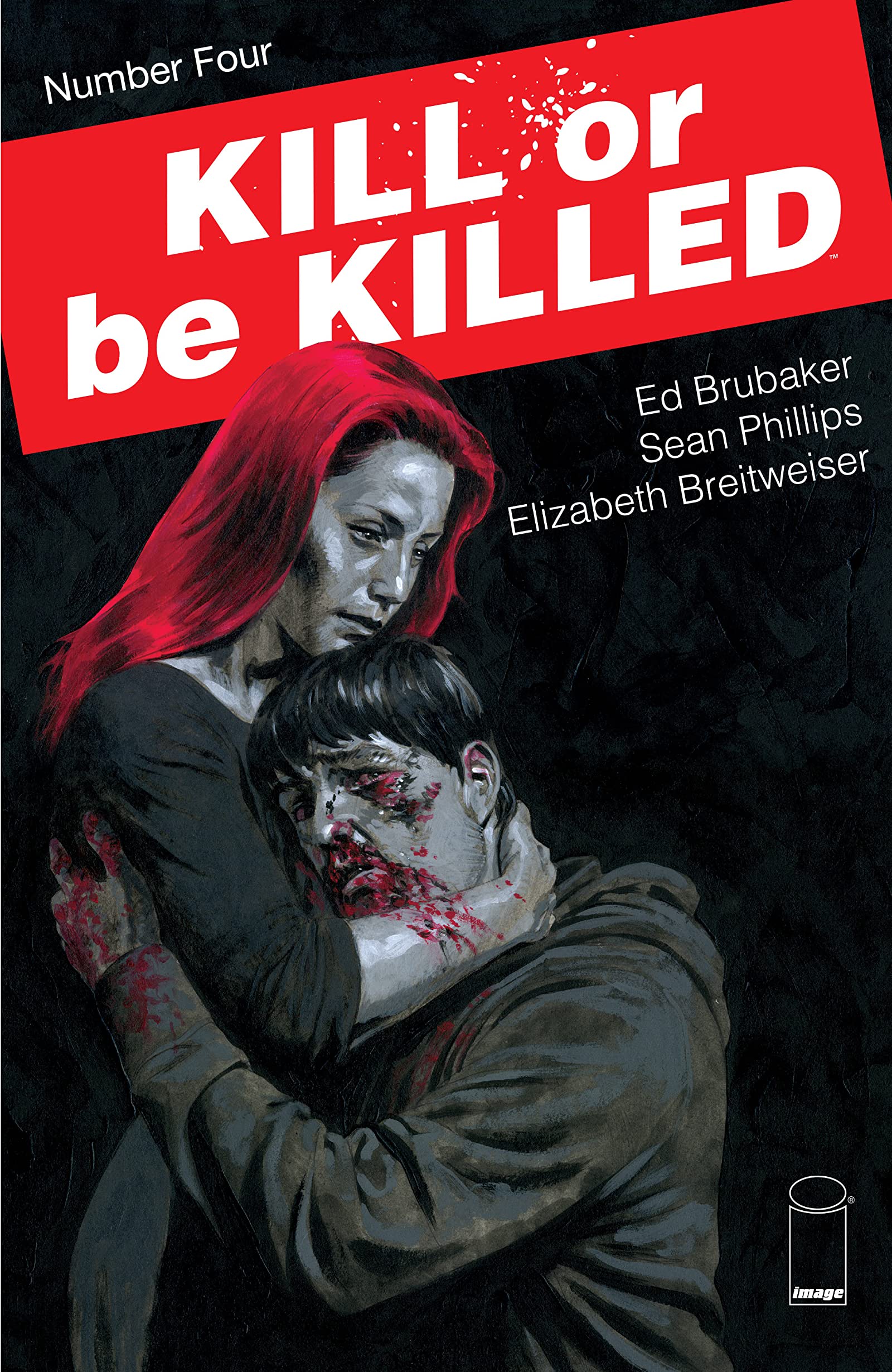
This idea of using unethical means to stop corruption within the system is not a new one, but it is a lasting one. Throughout history, good people have toed ethical lines to expose the corrupt. Robin Hood is seen as a literary hero, yet he was a criminal to the institutions in power. His unethical behavior of violence and stealing was made ethical, from a utilitarian view, but there was always a fantasy about it. It was a whimsical adventure. Dylan’s tale in Kill or Be Killed, however, replaces whimsy with shocking violence and brutal deaths, yet essentially delivers the same age-old message: when the system fails and those in positions of power are corrupt, unethical means can be justified. Although, the fallout of such actions is prominently explored in Kill or Be Killed.
Where Robin Hood overthrows the prince using violence, saves the kingdom, and gets the maiden, Dylan struggles with his mental health, personal relationships (especially with his love interest Kira), and his social behavior. In this way, Kill or Be Killed does a good job of carrying the realist theme over into the consequences of Dylan’s actions. Many past “noble” vigilantes (like Robin Hood) seem to avoid the major blow-back that would come with how they accomplished their goals.
Using Comics To Consider Ethics
This deviation from the mainstream might be one of the most important aspects of Kill or Be Killed. Yes, our country has problems. From the political top, through the justice system, and all the way down to the lowest social services; nevertheless, Kill or Be Killed reminds us, in a not-so-subtle way, that bludgeoning the system into submission is not the answer. Such action can have wide-reaching ramifications and, in the end, may in fact not be ethical. Even though Kill or Be Killed might appear to lean more toward an anarchist solution, the very real consequences that Dylan reaps, including his own death in the story’s waning pages, work to make the reader consider the different perspectives of ethics and morality.
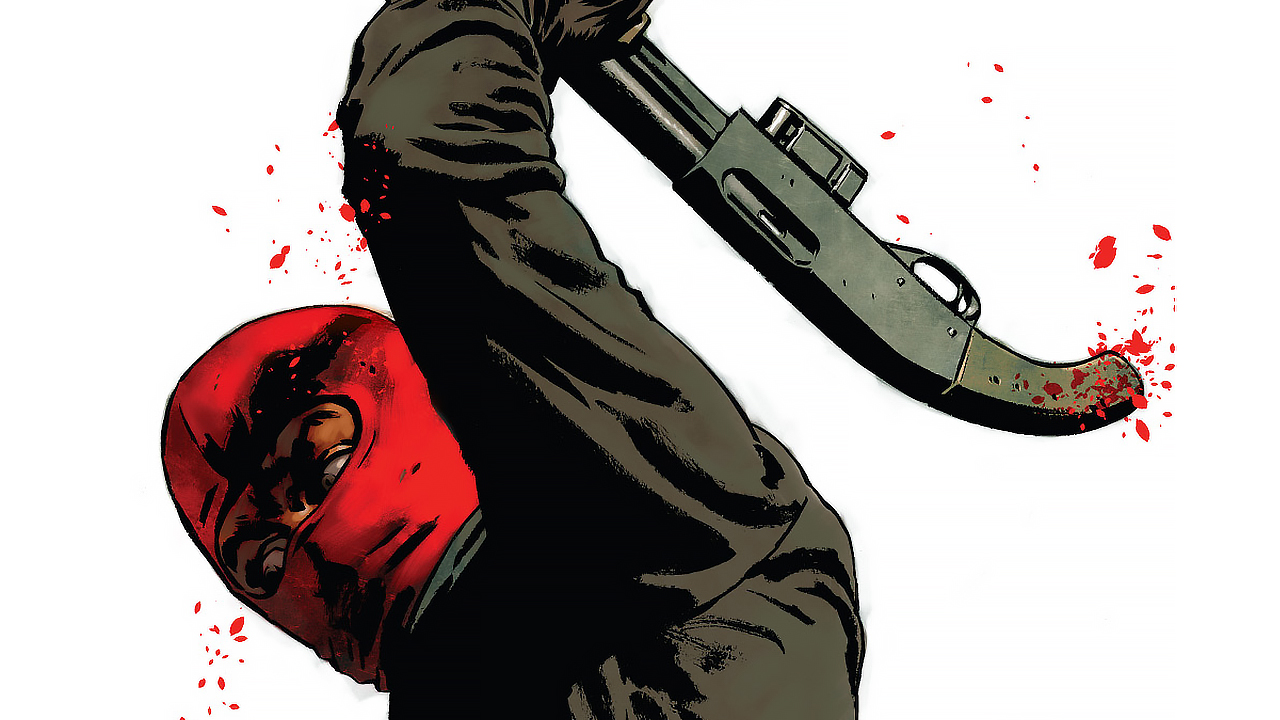
After Dylan’s demise, we see that his visions of a kill-hungry demon have manifested themselves to his love interest, Kira. Racked with grief, guilt, and, anger after finding out about Dylan’s death and secret vigilante life, will she now manipulate utilitarian ethics to suit her desire for justice or vengeance? Maybe. Considering that comics are a unique and collaborative experience, we, the readers, are now given the choice. We have committed every heinous act, seen the blood-spattered walls, heard each victims’ last words, and seen how easy it is to use ethics as justification for murder, just like Dylan. Now, like it is Kira’s, it is our turn to go out into the world and consider the weight of our ethical choices.
